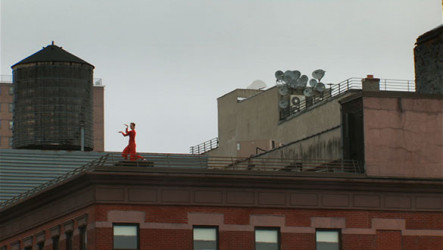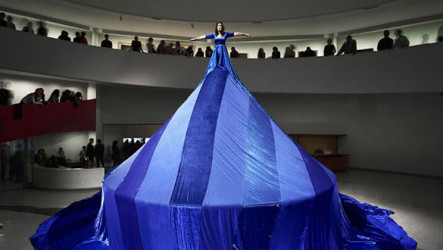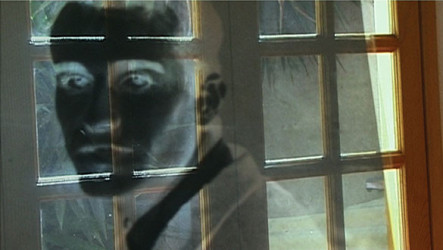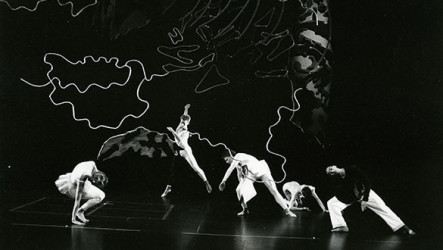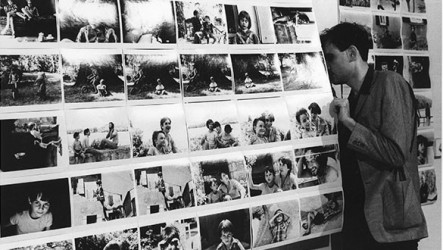The French-American director, cinematographer and photographer Babette Mangolte maintains a special standing within independent avant-garde cinema and the artistic scene of New York. We have the pleasure of presenting her work for the first time in Greece. The particularity of her work does not arise from a merely materialistic consideration of cinematic means, as is frequently the case in so-called “structural films”, but from a persistent inquiry into the very act of looking.
In her first film, What Maisie knew (1975), she invites us to explore, what it truly means to look through the eyes of a young girl. In her self-portrait, The Camera: Je, or La Caméra: I (1977), we see through the eyes of the photographer—yet also what it is like, to look at ourselves during the act of being photographed. In her powerful documentary, The Sky on location (1982), with a deeply visual sensibility, she meditates audiovisually on the heterotopies of American nature and the legends of the Wild West, whilst in Visible cities (1991), in the act of observing the rapidly changing urban landscape, she ruminates on what it means for one to have a home, through the eyes of two unprivileged women. Moreover, in her documentary The Models of Pickpocket (2003), by thoroughly investigating and visually paying tribute to the great seminal film director Robert Bresson, she reveals his immense influence on her directorial style, regarding her sense of space.
In her documentaries on the arts of dance and performance, her deftness and precision in perceiving space and time, as they unfold through the movements of bodies, becomes uniquely evident. Mangolte, first and foremost, observes—whilst she becomes enchanted through this very act, proceeding to transmit her fascination of these body arts to the viewer. Three documentaries will be screened on the pioneer of postmodern dance, Trisha Brown: Water motor (1978), Roof piece on the High Line (2012) and Staging “Lateral Pass” (1985/2013), as well as her documentary on the demanding nature of the art of performance, Seven easy pieces by Marina Abramović (2007).
Finally, Mangolte, in the interstice between analog film and digital video, presents her latest documentary, Calamity Jane and Delphine Seyrig, A story (2020), in which she pays tribute to the iconic actress and feminist Delphine Seyrig, whilst inquiring into the concept and importance of Wild West’s female legend for today’s feminism.
Film selection: Babette Mangolte, Ioulia Mermigka
Programming: Jacob Skenderidis
Introduction: Ioulia Mermigka
Preview photo: Water Motor, Trisha Brown ©1977 Babette Mangolte, all rights of reproduction reserved
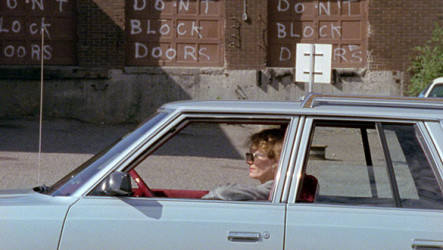
Calamity Jane and Delphine Seyrig: A Story
Read more ...
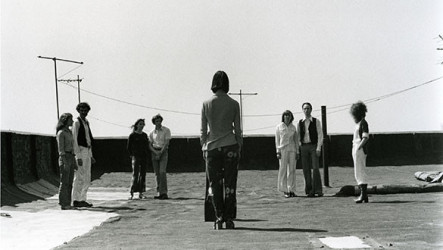
What Maisie knew
Scenes of quotidian life are presented through the eyes of a young girl. Influenced by the structural cinema of the time, Mangolte, in her first film, draws from the novel by the same name by Henry James and experiments with subjective camera and haphazard narrative. As different situations repeat and evolve, some of them erotic and some others funny, we see, as the girl sees, glimpses of gestures, exchanges and body parts, and we hear minimalist sounds and some words. In the words of Mangolte: “The film is about looking. My bet was that slight variations of few recurrent elements would encourage the viewer to free associate and to fantasize a kind of narrative”. Noteworthy are the shots of the room with the fog. Its small cast includes Yvonne Rainer and the composer Philip Glass.
Babette Mangolte (1941) is a French-American director, cinematographer, photographer and artist who has lived in New York since 1970. She has worked as a cinematographer with Chantal Akerman and Yvonne Rainer and has made important experimental films on the very act of looking about the American landscape, about contemporary dance and the art of performance. She is considered one of the most important artists of the American avant-garde and currently teaches at the University of San Diego in California.
Photos: What Maisie Knew, Roof ©1975 Babette Mangolte, all rights of reproduction reserved
Read more ...



